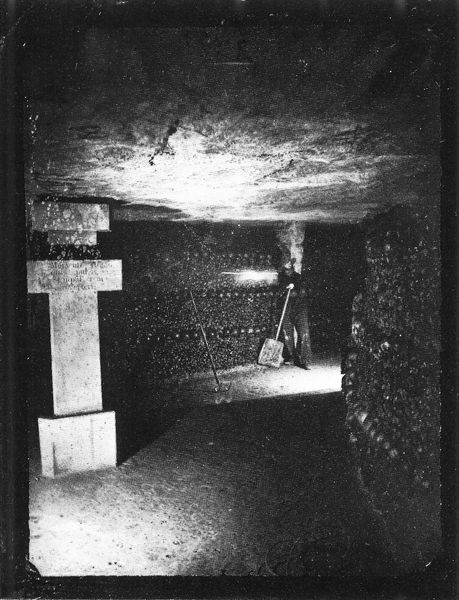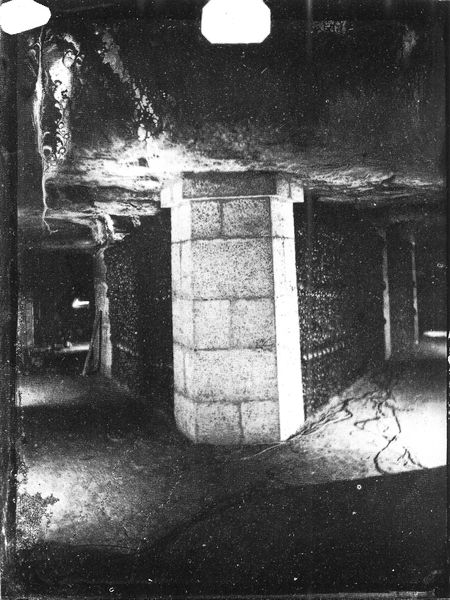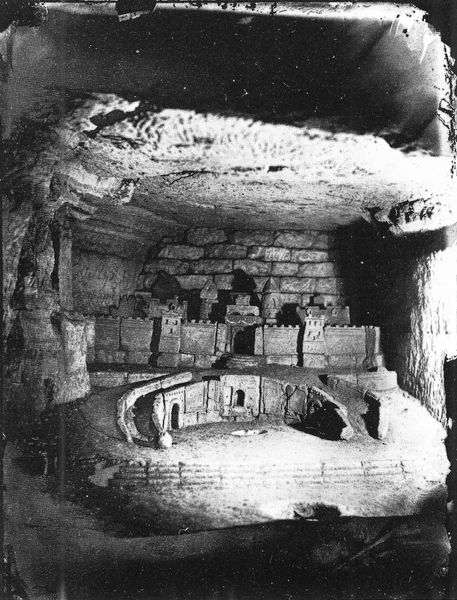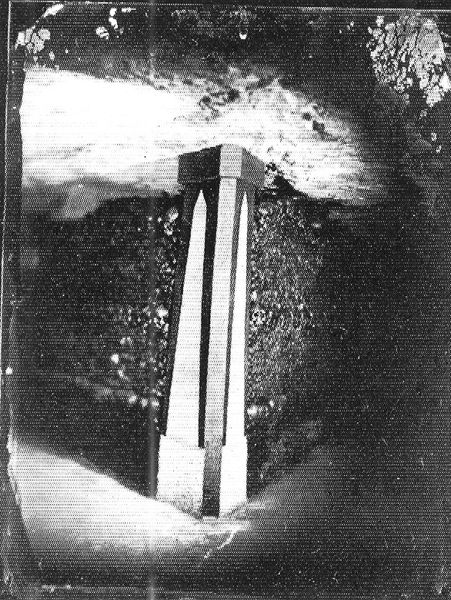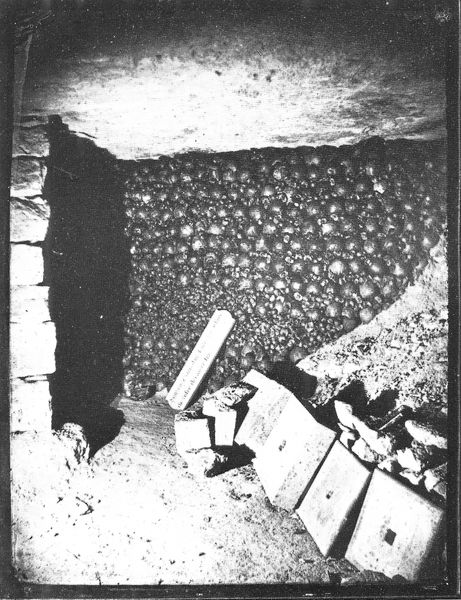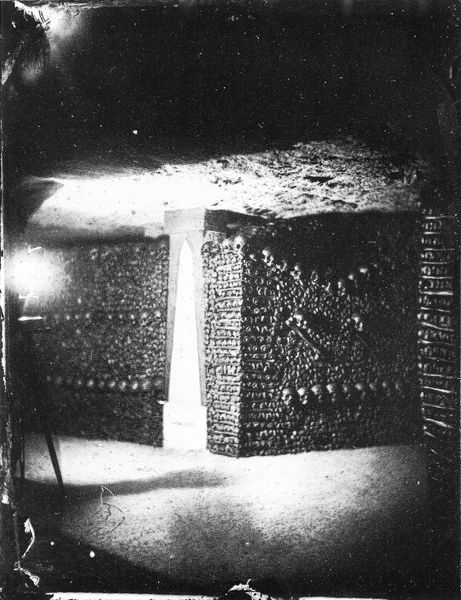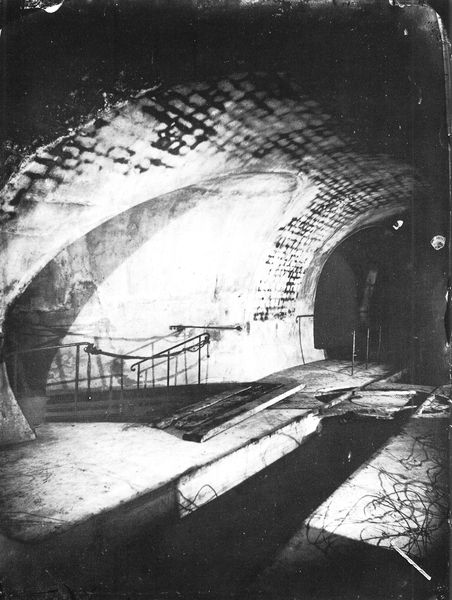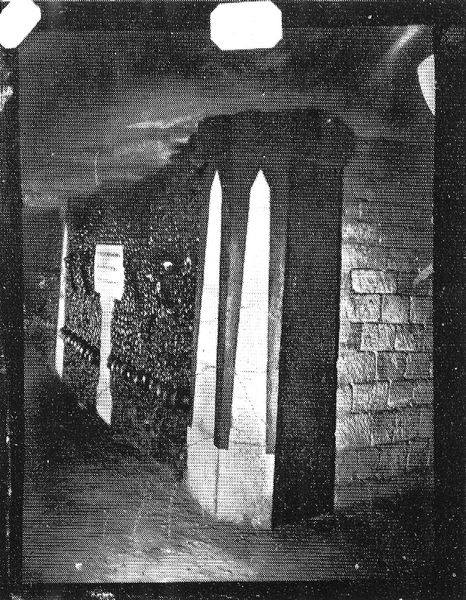
photography, gelatin-silver-print
#
sculpture
#
landscape
#
photography
#
gelatin-silver-print
#
monochrome photography
#
monochrome
#
realism
#
monochrome
Copyright: Public domain
Curator: This haunting gelatin-silver print, titled "Catacombes De Paris", was captured by Félix Nadar in 1861. The image pulls us deep into the Parisian catacombs. Editor: It gives me a sense of immense age, almost prehistoric. There's something elemental about the rough stone and the absolute stillness captured in this monochrome landscape. Curator: Absolutely. Nadar was a pioneer in using artificial light to photograph these underground spaces. He wanted to document, in a realist fashion, spaces that were both historically important and deeply unsettling to the collective imagination. Editor: What strikes me is how the image itself operates symbolically. The deep shadows, the narrow opening framed by what look like funerary stones, speaks to themes of death, the subconscious, the hidden layers beneath the veneer of modern society. Curator: It speaks, too, of public health and civic responsibility. These catacombs were created to deal with overflowing cemeteries in 18th-century Paris, a solution both pragmatic and macabre. Nadar, through the lens of his camera, helped frame a debate that went on for many years within French society. Editor: This prefigures modern forensic photography too. Though artistic, there’s a definite feeling of clinical precision. I wonder how viewers would've felt upon seeing the photo in the mid-19th Century? It gives a strange legitimacy to seeing the morbid aspects of daily life in plain sight. Curator: I think they would have felt both fascinated and disturbed. These photographs provided a glimpse into a hidden world, made accessible to a public audience who had read about the catacombs or maybe even ventured briefly inside. This work of Nadar served to record what might remain unrecorded. Editor: Considering Nadar's political activism, particularly his republicanism, do you think this documentation served a didactic purpose, perhaps highlighting societal concerns related to urbanization? Curator: Undoubtedly. Nadar often blended his artistic pursuits with his political beliefs, and this image certainly evokes a sense of civic awareness by bringing unseen realities into view. Editor: Looking again, I can’t help but notice how it bridges documentary realism with a dark, romantic sensibility. Thank you for illuminating that fascinating nexus for me. Curator: And thank you, for reminding us of how a seemingly simple photograph can speak volumes about cultural memory and urban evolution.
Comments
No comments
Be the first to comment and join the conversation on the ultimate creative platform.

